Solving The Data Processing Alone Is Mindnumbing…








Solving the data processing alone is mindnumbing…
The amount of sensory information collected pose a huge storage problem and require real-time signal processing to reduce the information to relevant data. In mid 2011 it was estimated the array could generate an exabyte a day of raw data, which could be compressed to around 10 petabytes.
Square Kilometre Array
The Square Kilometre Array (SKA) is a radio telescope project that will be built in Australia and South Africa. It will have a total collecting area of approximately one square kilometre. It will operate over a wide range of frequencies and its size will make it 50 times more sensitive than any other radio instrument.
The Square Kilometre Array SKA
More Posts from Smartler and Others
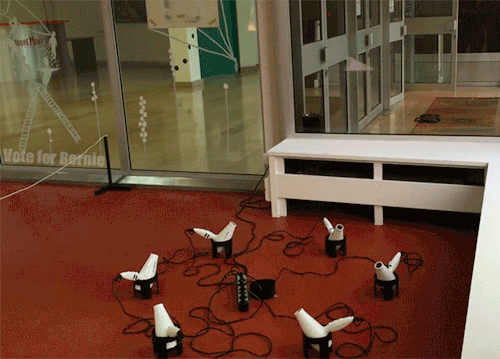
When engineers are bored.


(photo by mrmailbox)
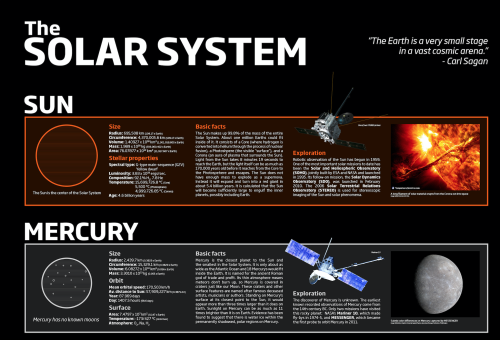
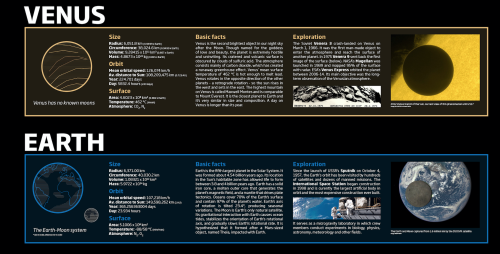
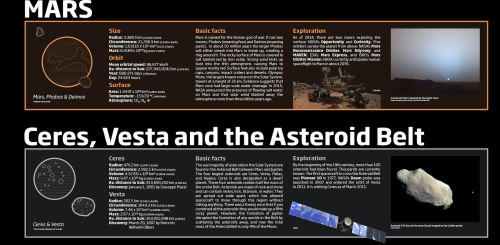
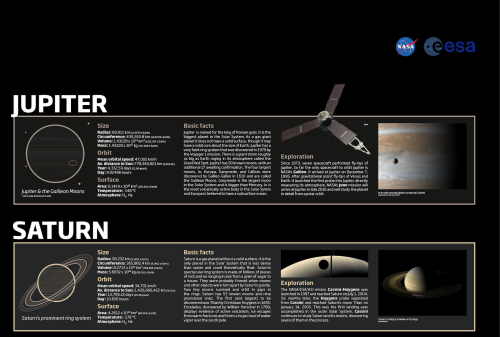
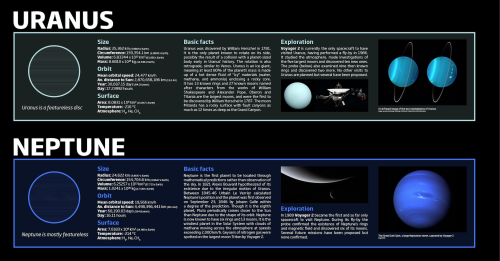
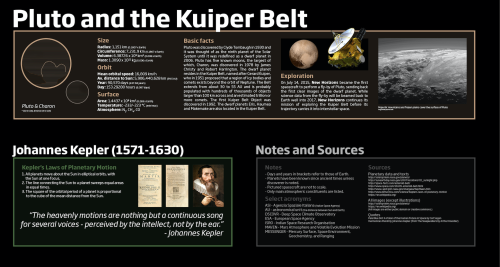
The Solar System
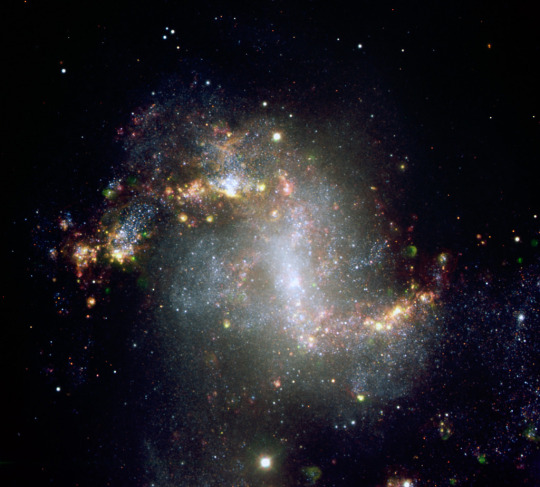
Gotta love science ❤️









– Isaac Asimov, 1922 - 1992
name one difference between birds and children
Travel Posters of Fantastic Excursions
What would the future look like if people were regularly visiting to other planets and moons? These travel posters give a glimpse into that imaginative future. Take a look and choose your destination:
The Grand Tour

Our Voyager mission took advantage of a once-every-175-year alignment of the outer planets for a grand tour of the solar system. The twin spacecraft revealed details about Jupiter, Saturn, Uranus and Neptune – using each planet’s gravity to send them on to the next destination.
Mars

Our Mars Exploration Program seeks to understand whether Mars was, is, or can be a habitable world. This poster imagines a future day when we have achieved our vision of human exploration of the Red Planet and takes a nostalgic look back at the great imagined milestones of Mars exploration that will someday be celebrated as “historic sites.”
Earth

There’s no place like home. Warm, wet and with an atmosphere that’s just right, Earth is the only place we know of with life – and lots of it. Our Earth science missions monitor our home planet and how it’s changing so it can continue to provide a safe haven as we reach deeper into the cosmos.
Venus

The rare science opportunity of planetary transits has long inspired bold voyages to exotic vantage points – journeys such as James Cook’s trek to the South Pacific to watch Venus and Mercury cross the face of the sun in 1769. Spacecraft now allow us the luxury to study these cosmic crossings at times of our choosing from unique locales across our solar system.
Ceres

Ceres is the closest dwarf planet to the sun. It is the largest object in the main asteroid belt between Mars and Jupiter, with an equatorial diameter of about 965 kilometers. After being studied with telescopes for more than two centuries, Ceres became the first dwarf planet to be explored by a spacecraft, when our Dawn probe arrived in orbit in March 2015. Dawn’s ongoing detailed observations are revealing intriguing insights into the nature of this mysterious world of ice and rock.
Jupiter

The Jovian cloudscape boasts the most spectacular light show in the solar system, with northern and southern lights to dazzle even the most jaded space traveler. Jupiter’s auroras are hundreds of times more powerful than Earth’s, and they form a glowing ring around each pole that’s bigger than our home planet.
Enceladus

The discovery of Enceladus’ icy jets and their role in creating Saturn’s E-ring is one of the top findings of the Cassini mission to Saturn. Further Cassini discoveries revealed strong evidence of a global ocean and the first signs of potential hydrothermal activity beyond Earth – making this tiny Saturnian moon one of the leading locations in the search for possible life beyond Earth.
Titan

Frigid and alien, yet similar to our own planet billions of years ago, Saturn’s largest moon, Titan has a thick atmosphere, organic-rich chemistry and surface shaped by rivers and lakes of liquid ethane and methane. Our Cassini orbiter was designed to peer through Titan’s perpetual haze and unravel the mysteries of this planet-like moon.
Europa

Astonishing geology and the potential to host the conditions for simple life making Jupiter’s moon Europa a fascinating destination for future exploration. Beneath its icy surface, Europa is believed to conceal a global ocean of salty liquid water twice the volume of Earth’s oceans. Tugging and flexing from Jupiter’s gravity generates enough heat to keep the ocean from freezing.
You can download free poster size images of these thumbnails here: http://www.jpl.nasa.gov/visions-of-the-future/
Make sure to follow us on Tumblr for your regular dose of space: http://nasa.tumblr.com

Lest we forget
funny tumblr [via imgur]
-
 mammal-that-cares liked this · 9 years ago
mammal-that-cares liked this · 9 years ago -
 cosmiclawnmower reblogged this · 9 years ago
cosmiclawnmower reblogged this · 9 years ago -
 priority-male liked this · 9 years ago
priority-male liked this · 9 years ago -
 dx777 liked this · 9 years ago
dx777 liked this · 9 years ago -
 chipil liked this · 9 years ago
chipil liked this · 9 years ago -
 gaoxing-foxy-blog liked this · 9 years ago
gaoxing-foxy-blog liked this · 9 years ago -
 bloodysalads liked this · 9 years ago
bloodysalads liked this · 9 years ago -
 jayclean reblogged this · 9 years ago
jayclean reblogged this · 9 years ago -
 smudgeyfluff-blog liked this · 9 years ago
smudgeyfluff-blog liked this · 9 years ago -
 m1ster-e reblogged this · 9 years ago
m1ster-e reblogged this · 9 years ago -
 m1ster-e liked this · 9 years ago
m1ster-e liked this · 9 years ago -
 jb2489 reblogged this · 9 years ago
jb2489 reblogged this · 9 years ago -
 jb2489 liked this · 9 years ago
jb2489 liked this · 9 years ago -
 paperairplanepilot liked this · 9 years ago
paperairplanepilot liked this · 9 years ago -
 247overthinker liked this · 9 years ago
247overthinker liked this · 9 years ago -
 himmel-street-survivor liked this · 9 years ago
himmel-street-survivor liked this · 9 years ago -
 adventurewithtea reblogged this · 9 years ago
adventurewithtea reblogged this · 9 years ago -
 caitlincato reblogged this · 9 years ago
caitlincato reblogged this · 9 years ago -
 stillweatcher liked this · 9 years ago
stillweatcher liked this · 9 years ago -
 understanding-the-change liked this · 9 years ago
understanding-the-change liked this · 9 years ago -
 mylovelifeisyou reblogged this · 9 years ago
mylovelifeisyou reblogged this · 9 years ago -
 buddingspud reblogged this · 9 years ago
buddingspud reblogged this · 9 years ago -
 philosophere reblogged this · 9 years ago
philosophere reblogged this · 9 years ago -
 vibrantx liked this · 9 years ago
vibrantx liked this · 9 years ago -
 18-is-my-lucky-number reblogged this · 9 years ago
18-is-my-lucky-number reblogged this · 9 years ago -
 floritaofwholock liked this · 9 years ago
floritaofwholock liked this · 9 years ago -
 justjay-cee liked this · 9 years ago
justjay-cee liked this · 9 years ago -
 juanisim0 liked this · 9 years ago
juanisim0 liked this · 9 years ago -
 sirjay372 liked this · 9 years ago
sirjay372 liked this · 9 years ago -
 puzzledshrike reblogged this · 9 years ago
puzzledshrike reblogged this · 9 years ago -
 puzzledshrike liked this · 9 years ago
puzzledshrike liked this · 9 years ago -
 elementrey-blog reblogged this · 9 years ago
elementrey-blog reblogged this · 9 years ago -
 wolven-hearted reblogged this · 9 years ago
wolven-hearted reblogged this · 9 years ago -
 kittenbogies liked this · 9 years ago
kittenbogies liked this · 9 years ago -
 smartler reblogged this · 9 years ago
smartler reblogged this · 9 years ago -
 bikabikachu liked this · 9 years ago
bikabikachu liked this · 9 years ago -
 gaymergirlhana liked this · 9 years ago
gaymergirlhana liked this · 9 years ago -
 jiiroad-blog liked this · 9 years ago
jiiroad-blog liked this · 9 years ago -
 fatlumpofcorruption-blog liked this · 9 years ago
fatlumpofcorruption-blog liked this · 9 years ago